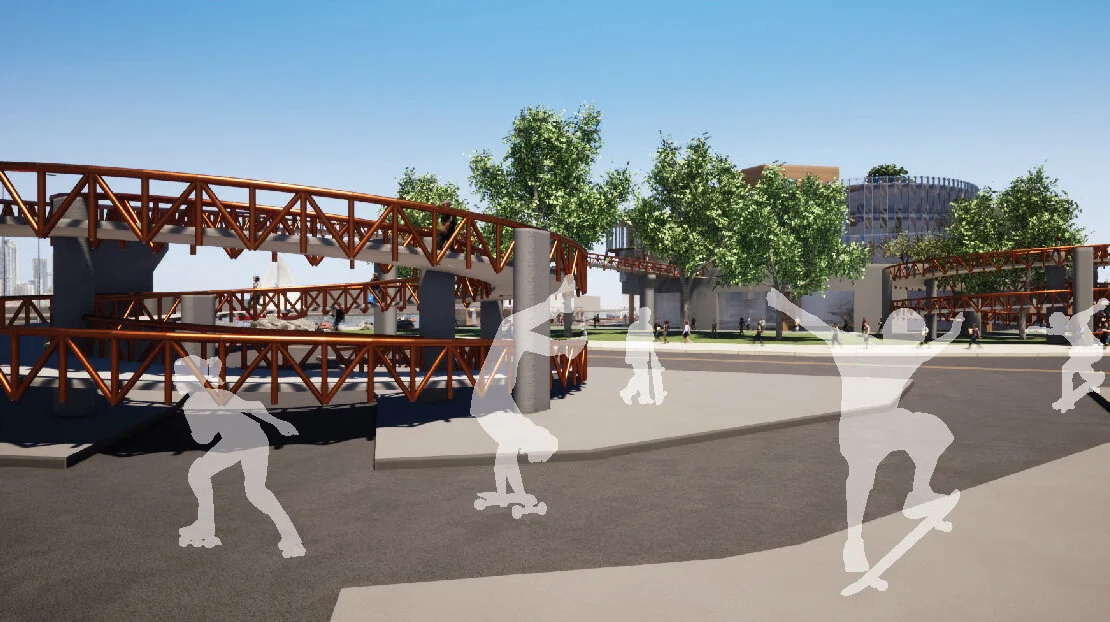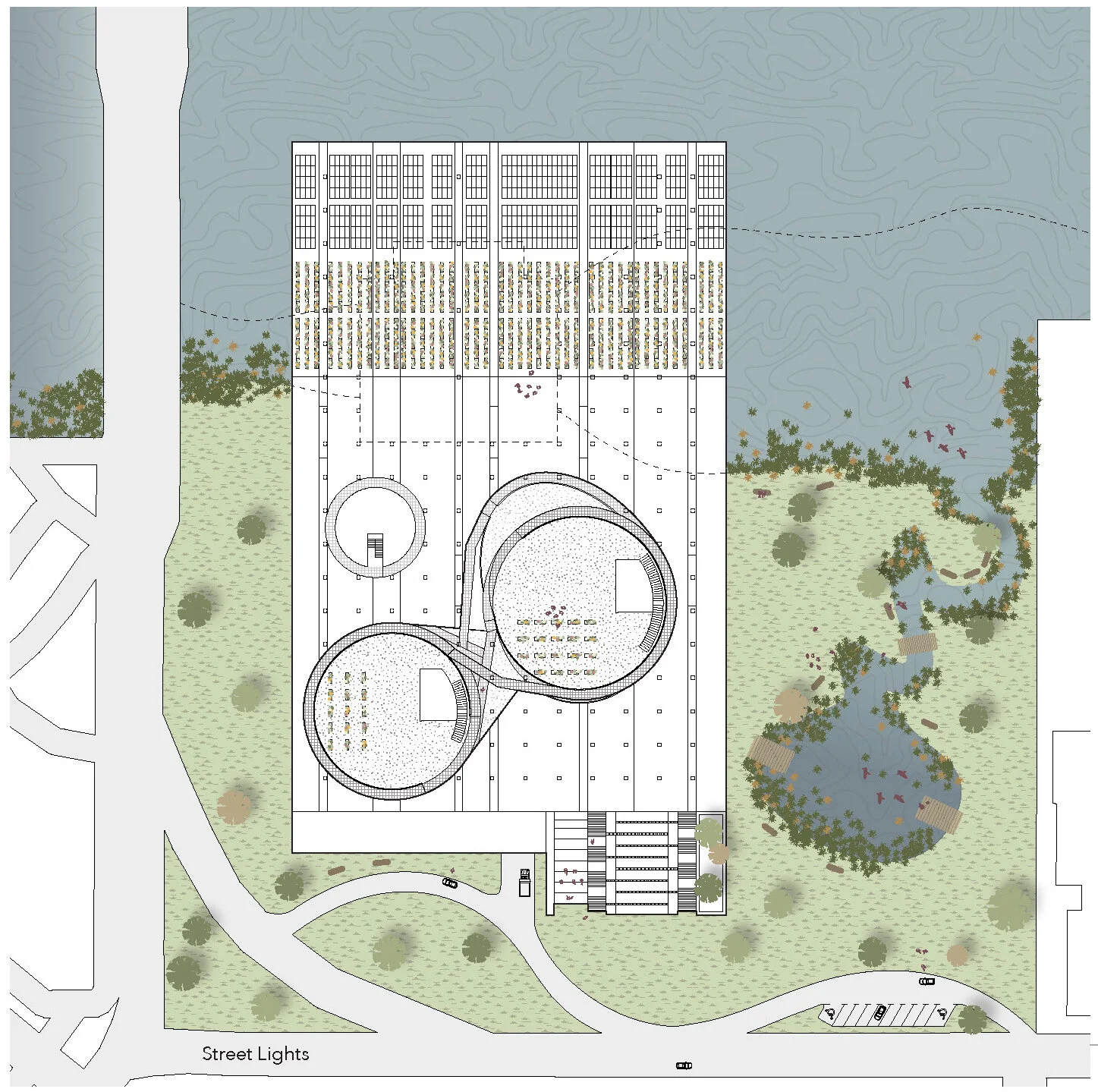Videos
Fall 2020
Instructors: Evan Jones and Margaret Ikeda
Biologists define an ecotone as a region of transition between two biological communities. In nature these two communities create edges that are legible but equally capable of growth, adaptation and change. This idea was a launching point for the exploration of speculations about Islais Creek and the Bayview-Hunters Point neighborhood as well as thinking about overall issues of coastal flooding and adaptation.
The historical settlement of the San Francisco Bay shoreline, like many urban estuaries, has been one of modifying these natural ecotones in favor of fixed vertical edges engineered for specific hard infrastructures like piers and seawalls. Islais Creek, once the largest watershed in the San Francisco peninsula, was gradually channelized and filled in by real estate speculators. Currently, the location where Islais Creek visually begins (daylighted) is a major outflow for a wastewater treatment plant that handles 80% of the city’s solid waste. The edges are mostly truncated, paved and covered with non-functioning piers and silos, but also commercial shipping that brings in piles of building materials, sand, concrete and aggregate, essential for the construction of the city which rises in the background. These large infrastructural projects have created physical shoreline boundaries, marginalizing communities like Bayview Hunter’s Point from water access and leaving a legacy of polluted soil, underemployment and urban segregation. Yet intertwined with these material staging areas are novel approaches to material salvage, landscape businesses, and creative reuse. We will look to these approaches to suggest potential avenues for new economic development as an alternative to top-down approaches. As historical inequalities are being brought to light in the public discourse and as the economic fallout of the pandemic impacts poor communities disproportionately, this studio will explore how architecture can begin to synthesize ecological and urban remediation with practical and inspired architectural actions.
This studio worked with longtime AEL partners at the Benthic Lab, Kreysler & Associates, and Autodesk Technology Centers. As well as with agency input from the Port of San Francisco, the City of SF Planning as well as BCDC, the major governing bodies tasked with regulating Islais Creek shoreline area. Teams of predominantly two students worked to understand these high level policies in conjunction with a more fine grain reading of the community, the ecology, and the infrastructure potential of the site from the ground up. The teams worked with CCA faculty Julia Grinkrug and CCA alumni D’Sjon Dixon, through Y-Plan to engage with local 4th graders at Malcolm X Elementary school to understand environmental justice issues facing the community. Each team leveraged the opportunity to integrate systems that tap into site resources like wastewater, renewable energy collection, transport hubs, and food production. Looking ecologically at the site, in conjunction with collaboration with restoration biologists and urban farmer Ben Fahrer, the projects explored how their architectural propositions facilitate growth and regeneration of human and non-human communities.
The studio is registered in the Green New Deal Superstudio which looks at giving vision to how social justice and climate change can be manifested in specific regional proposals which demonstrate principles of Decarbonization, Justice and Jobs. The studio work will be exhibited as part of this national effort in September of 2021.
Buoyant Ecologies: Urban Ecotones at Islais Creek, Fall 2020: Mariajose Anguita, Mitsuko Balarezo, Michelle Boyd, Roxana Yaquelin Breceda, Javier Breceda, Pietro Carini, Dev Chand, Aljune Drequito, Jennifer Jimenez, Cristian Laurent, Maria Ramirez Perez, Steven Ramirez, Valeriya Velyka, Elmer Wang, Yuyi Zheng


























